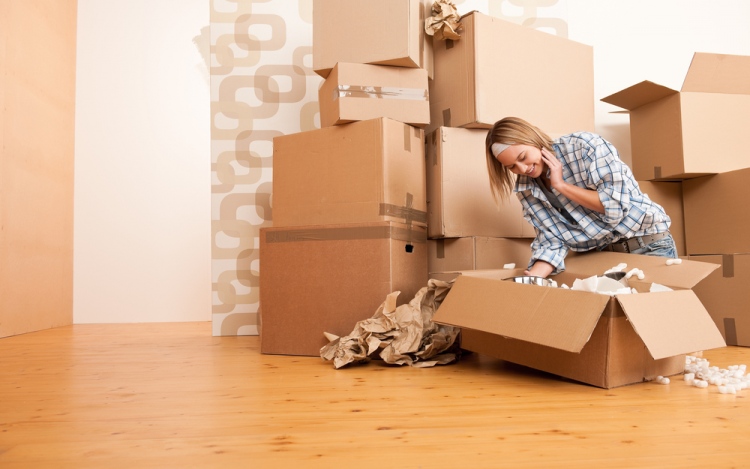Always when sorting, organizing and preparing the fragile items for packing, you should be more careful than normal, because the fragile items are after all – fragile. Not to mention that some of them are very expensive too, and that`s why they require special cares when lifting, handling and loading/unloading from the moving van. Check out some more tips:
– Leave the fragile items for last. Start by sorting and de-cluttering all other objects – furniture, appliances, accessories, etc. and then start by sorting only the fragile items. Put them off aside or in a separate place of the house and try to avoid mixing porcelain cups and vases with kitchen chairs, for example.
– Make a special column in your checklist only for the fragile items. It will help keep everything in order just by a blink of the eye, especially if you sort, pack and note every fragile item in your checklist justly. A great tip is to make a column for the smallest fragile items, one for the medium-sized fragile items and one for the largest fragile items. Or else, if you plan a journey of moving a truly big house with hundreds of items and fragile items, then a better organization of the checklist is by rooms. Make a column only for the fragile items from the Bathroom, one for the fragile items from the Kitchen, from the Living room, etc.
– Use extra wrappings and protection/insolation materials. Yet try not to overdo the wrapping of the fragile objects, because it could make them safer for the trip, but you have to trade a lot of valuable space for that. The perfect wrapping should be enough to protect the fragile items, as well as make them perfect for packing in boxes. Use old newspapers to wrap every individual glass cup, pot or a vase. Pile less than a dozen glass plates on top of each other and them wrap the piles with individual wrappings. Other typical wrappings for fragile objects include bubble wraps with the smallest bubbles, as well as cotton towels, paper towels, fabrics and light textile materials. Indeed, if you use some clothing to wrap the fragile items, you get advantage of one of the best space-saving techniques, because you move the clothes and the fragile items at once instead of in two, three or more different boxes. Cardboard sheets, foam pieces and rubber tape are just a few other useful ways to protect the fragile items from the vibrations along the route.
– Label all the boxes with fragile items, according to the order, in which you mention them in the checklist. Use big labels with contrasting colors and with the simple “Fragile” sign. This will help the movers to orientate easily when they have to handle the boxes with fragile objects.
These are few examples of the most typical fragile items that one can come across when moving house:
– Mirrors, glass tops of side tables, pieces of glass, large glass pieces from the bathtub, mirrors.
– Decorative fragile objects from glass, porcelain, stone, marble, etc.
– Electronic devices that will need a special waterproof packing if you plan moving home in a rainy day.
– Small kitchen equipment, appliances and kitchen robots.
– Fitness equipment even though it can be dismantled easily.
– Paintings, artworks, art installations and light fixtures.




